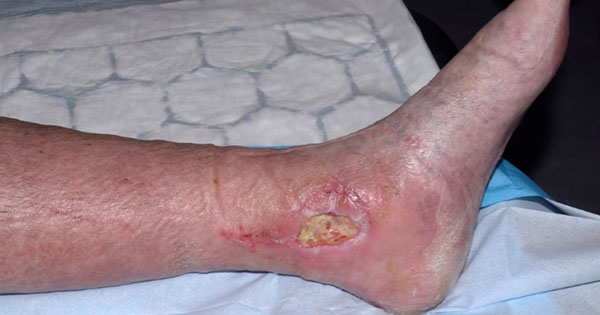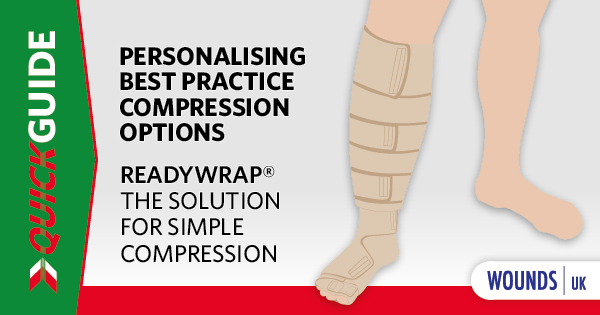If you ask me what I know about wound care, there will probably be a long pause. Perhaps because firstly, ‘wound care’ is a very general term, and refers to a whole myriad of things. Secondly, working in general practice, there is the unfortunate phenomenon of ‘leave it to the nurses’. But if you asked a pharmacist working in a specialist clinic, or in the community, you may get a much better answer. It’s important to remember that we all work in different settings and, therefore, have different levels of knowledge, training and experience — meaning the role of a pharmacist in wound care is not a one size fits all. But in this article, I will discuss how, no matter what background we are coming from, we can use our baseline knowledge to make a difference in the management of wounds.
Wound care involves diagnosing the wound type, taking a holistic approach to what could be affecting wound healing and deciding on appropriate treatment. The rapidly growing issue of chronic wounds has been described as a ‘silent epidemic’, which doesn’t come as a surprise when the annual incidence of wounds treated by the NHS rose by 71% from 2012–2013 to 2017–2018 (Guest et al, 2020). When we think of wounds, simple things such as burns, cuts or lacerations may come to mind. Or as healthcare professionals, we may think of diabetic foot ulcers, pressure wounds from prolonged periods of immobility, or blood vessel diseases that can cause venous and arterial wounds, such as diabetic foot ulcers. No matter what end of the scale it falls on, the dangers of serious infections, such as sepsis, osteomyelitis, cellulitis, or necrotising fasciitis, should never be minimised. The story from the UK Sepsis Trust around a 24-year-old who developed necrotising fasciitis from an infected eczema wound is just one example among many that should always be a reminder of this to us. Many patients with wounds may have just undergone surgery, or have a number of comorbidities that are uncontrolled. The point is, it’s not just about the site of the wound, we have to look at the whole picture.
Pharmacists are ideally placed to have a role here; we are pretty much everywhere. You will find us on hospitals wards, outpatient/specialist clinics, GP practices, community pharmacies, specialist clinics, care homes and so on. One of our tasks is medication reviews, which is a comprehensive review of each medicine and the overall health status of the patient. This is a golden opportunity to assess any risk factors for wounds and early signs of venous insufficiency, such as swelling, pain or discoloured skin and if anything they are taking may be exacerbating this. From this, we can then work with the multidisciplinary team to ensure it is investigated. This is especially important in those with uncontrolled diabetes, hypertension or obesity — all of which are extremely common and conditions that we deal with on a day-to-day basis.
Currently, practice nurses perform holistic and detailed assessments for those with chronic wounds. For patients that are housebound, community nurses visit their homes where they can carry out assessments. However, they are under a significant amount of pressure, carrying this responsibility. I feel there is real opportunity here for pharmacists to perform home visits. We are trained to not look at things in isolation, which is critical when reviewing these kind of patients.
In addition to what we may pick up during a medication review, if a patient is on an antibiotic to treat a wound, we would be able to use systems to detect if it interacts with other medications the patient is on, affecting its absorption, deeming it not as effective. We can then advise on either stopping it, or suggest alternatives or spacing out the doses to appropriate time frames. In patients where there is uncertainty or complexity, we can work with the multidisciplinary team to decide the best way to prioritise the patients’ healing.
Community pharmacies can also cover wound issues, for example, as part of the community pharmacist consultation service or the service for the treatment of skin infections associated with injection site complications. But looking at what is actually happening on the ground and speaking with some community pharmacists, most of them are not doing this on a regular basis. This may be due to a combination of lack of training, confidence, and patients not aware that they have this option. Community pharmacists usually have very good relationships with their patients and see them on a regular basis, whereas in general practice, the patient may end up seeing a different clinician each time they visit the surgery for an appointment. This is something that is very frustrating for them, as they like to have consistency when it comes to their care. Because of this advantage, they are in a good position to regularly monitor patients, assess their quality of life, advise on treatments and recognise poor healing early reducing the risk of complications, in addition to advocating for wound prevention and general health promotion. They are also well placed to notice risk factors for pressure ulcers such as a decline in mobility, weight changes, or repeatedly asking for wound care products, such gauze or bandages.
Chronic and poorly treated wounds do not only have physical health risks, but have significant psychological impacts, as it usually means their mobility is limited and they are in a constant state of pain and discomfort.
We need to work on reducing the merry go round of patients being referred left and right to different settings, where possible. As the majority of pharmacists are already independent prescribers, and all pharmacists will graduate as prescribers from 2026, community pharmacists could help patients get some of their comorbidities under control, reducing the incidence of their related wounds, as well as either helping to manage their wounds or referring appropriately, all in one detailed consultation. What will be more convenient for the patient is more likely to result in better outcomes, while ensuring we all work within our competence. If this could be done in more community settings, this would have a huge impact as the over-saturation of GP practice is reaching breaking point, in addition to patients complaining of waiting for hours for treatment plans from 111, or waiting in corridors in A+E.
Wound healing is highly dependent on the patients overall health status. Generally, conditions that limit blood flow to the area or that inhibits the immune system is going to have a detrimental effect on wounds. Pharmacists have a key role in health promotion — a healthy diet (e.g. high in vitamin C, zinc and protein), regular exercise, stopping smoking (which has been proven to affect the healing rate of chronic wounds), limiting alcohol and managing stress are all factors that will promote healing. Providing guidance to meet individual needs and connecting patients with social prescribers, dieticians, weight management teams and mental health practitioners are part of our everyday work. In addition, we are able to step in and get involved in choosing dressings (with the right training and guidelines in place), prescribing medication for pain (pain can constrict blood vessels slowing down healing), reviewing medications that may be slowing down the healing process, such as steroids and treating the patients other chronic conditions.
Chronic wounds tend to need continuous topical treatment, and at times the wound can form drug-resistant microbial films — the World Union of Wound Healing Societies (WUWHS) stated this can occur in 60-100% of non-healing wounds (Shultz et al, 2016). These are very complex to manage, and may involve anti-biofilm agents, removal (e.g. debridement), antimicrobials, and managing the patients environmental and clinical factors. There is still a lot of ongoing research in this area, and pharmacists could be involved in the management and raising the suspicion of biofilm presence through detecting antibiotic failure, an infection duration of over 30 days, tissue overgrowth or gelatinous material. For some patients it can be a viscous cycle – poor sugar control, resulting in a foot ulcer, resulting in amputation, resulting in another limb ulcer — this can be reduced through prevention and early diagnosis, which is why it’s important to utilise the skills that each clinician brings to the table, including pharmacists.
The national wound care strategy programme (NWCSP) was launched in 2018, to address inadequate wound care. It highlights how education and training for clinical staff is vital. A big reason why some pharmacists may hesitate about having a role in wound care, is lack of training in this area. We should be emphasising the significance of wounds in the community and making it a priority. The NWCSP team is trying to eliminate the misconception that nurses are solely responsible for wound care. In Southwark, there is a new lower limb clinic where the primary care network (PCN) team is trying to get pharmacists involved. The clinic is for treating lower limb wounds with a multidisciplinary team to help patients to recover faster — this includes staff from hospitals, community settings and GP practices. The clinic is already having very positive results, and its hoping to be spread out wider across south east London. Our role as pharmacists here could include first aid, prescribing for different wound types, long-term condition management and prescribing advice, such as for venous leg ulcer management by measuring for and supplying compression therapy. Nurses usually choose dressings, since most other clinicians lack the knowledge in this area. However, pharmacists may be able to have more of a role here as some dressings are classified as “pharmaceutical,” and may interact with other medications. Furthermore, all patients with lower limb wounds ideally should have ankle-brachial pressure index (ABPI) readings. This is a way to assess a patients vascular status and whether there may be peripheral arterial disease (PAD), which will help us as an MDT team in the management of these wounds. But the targets for completing these assessments are rarely being met — it is measured through calculations using blood pressure readings from the arms and the ankles, which is a basic skill for pharmacists.
Wound care needs to be made a priority in general practice sooner rather than later, and it is necessary to enhance wound care services in community settings, offer training, and encourage patient participation. It is a complex area that is multifactorial, and requires a number of different healthcare professionals to bring their skills to the table. Pharmacists have a role in both managing wounds and looking at the patient as a whole to improve the likelihood of a successful outcome.





